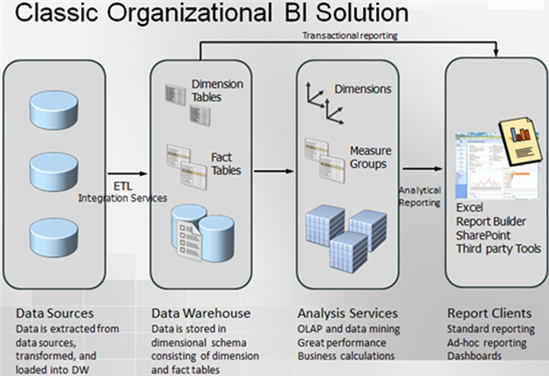When Developers and BI Collide
I’ve been running in this situation quite often so I thought this will make a good topic for a blog.
Scenario: Management has asked for some sort of a BI solution, such as a dashboard. BI hasn’t happened to the organization in question yet. But they have smart developers and there is no project that they can’t do. As the story goes, developers go to work and whip out some code… lots of it. Code for doing ETL, code for the database layer, and code for implementing the presentation layer, such as as a custom web application with cool third-party widgets. Everyone is happy… at least for a while.
I don’t have an issue with developers. In fact, I spent most of my career writing code. However, there are several pitfalls with this approach so let’s mention some of them:
- Custom code is expensive to write and maintain – Developers are pulled away from their primary tasks to implement the BI solution. When the initial enthusiasm wears off, managers find it difficult to allocate developers to extending and maintaining the BI solution.
- You end up with a proprietary, tightly-coupled solution – The solution would probably meet the initial goals but it might be difficult to extend. What if the custom web application is not enough and users prefer to analyze data in another tool, such as Microsoft Excel? Where are business calculations defined? How do you handle security?
- Not the right tools – There are many scenarios when writing custom code makes sense but BI is not one of it. There are specialized tools that are geared specifically toward BI. If you write custom code, more than likely you’ll face performance and maintenance challenges in a long run.
- Not a best practice – Most projects start simply but grow in complexity over time. It’s not uncommon for management to ask for more features, such as analyzing data by other subject areas or drilling to details. What’s has started as a dashboard project might evolve to an end-to-end BI solution that requires a data warehouse, analytical layer, and different presentation options.
- Coders are not BI pros – I hate to say this but even the smartest programmers don’t know much or care about BI. More than likely, you’ll end with a normalized database and summary tables for improving performance with aggregates. Again, there tools and methodologies for BI so there is no point reinventing the wheel. If you don’t know better, hire someone who does. “When all you have is a hammer everything looks like a nail” paradigm won’t bring you too far.
Solution: I’m sure you can add to the list, but what’s the solution? When you hear about BI or its manifestations, such as dashboards, reporting, analytics, etc., the following architecture should immediately come to mind.

This architecture is somewhat simplified. For example, it doesn’t show a staging database but it has the main pieces and their corresponding technologies in the Microsoft BI platform:
- A data warehouse whose schema is designed with reporting in mind.
- Integration services packages for ETL processes. They still have to be maintained but I dare to declare that maintaining SSIS is much easier that maintaining custom code. For example, it doesn’t require coding skills, it scales well, and it has a comprehensive logging infrastructure.
- An analytical layer, either as a multi-dimensional cube or a tabular model. This is the most overlooked piece but it’s the most important for the reasons I explained in my “Why an Analytical Layer?” blog.
- Finally, just like a car manufacturer, you should strive to assemble your solution with prefabricated parts instead of writing custom code. For example, you can implement very compelling dashboards with Power View that uses your analytical layer as a data source without having to write a single line of code. Not to mention that you can delegate this task to business users.
Now, with custom code you can do anything, including features that you can’t get out of the box with prepackaged BI tools. However, you’ll be surprised how willing your management might be to compromise with features especially in this economy.




